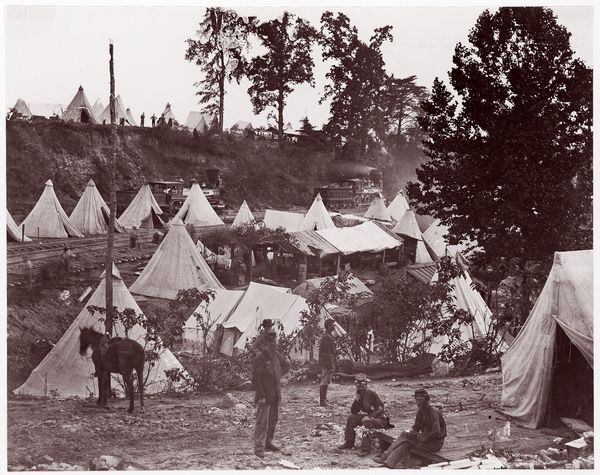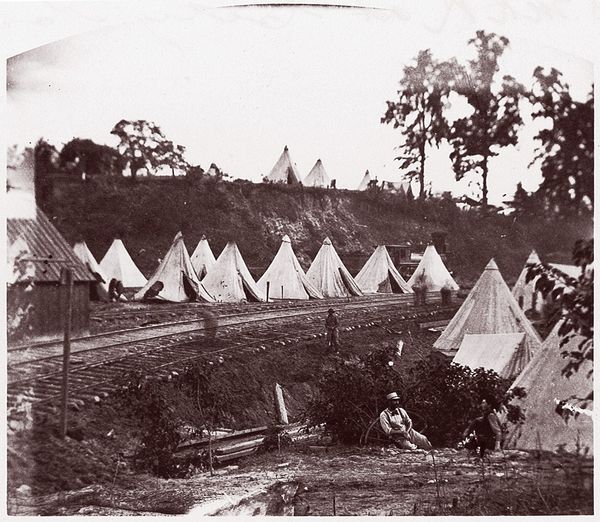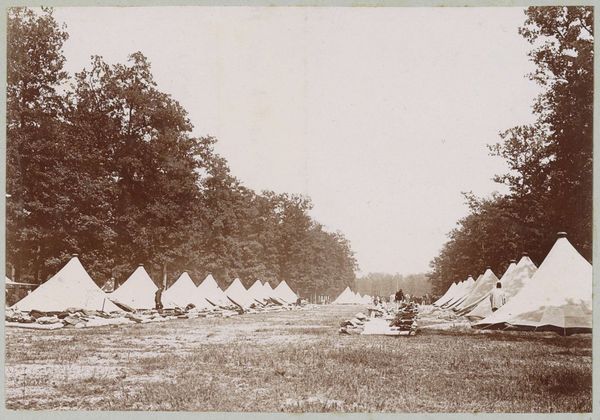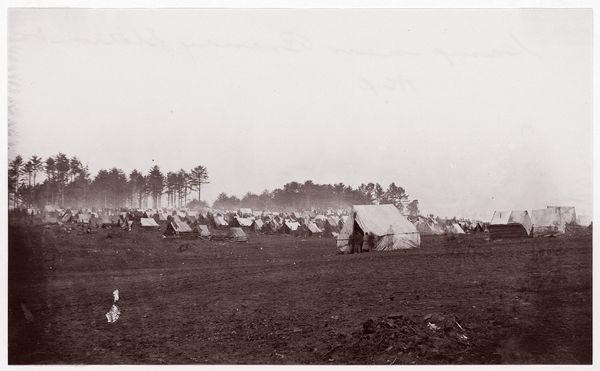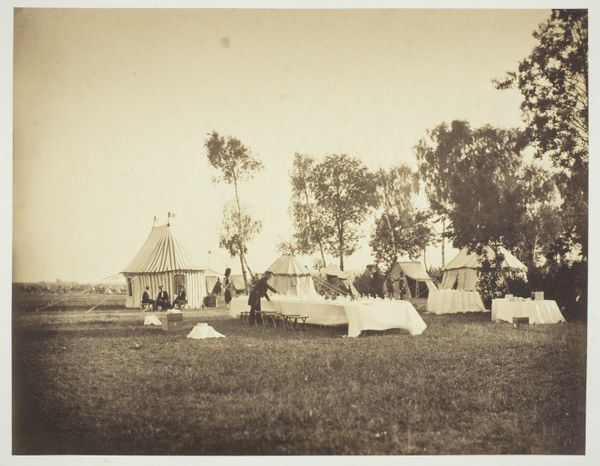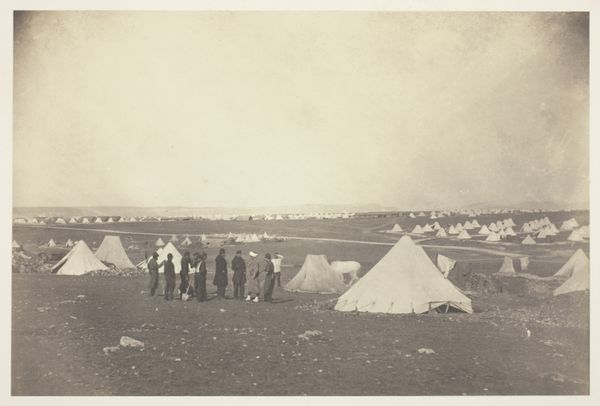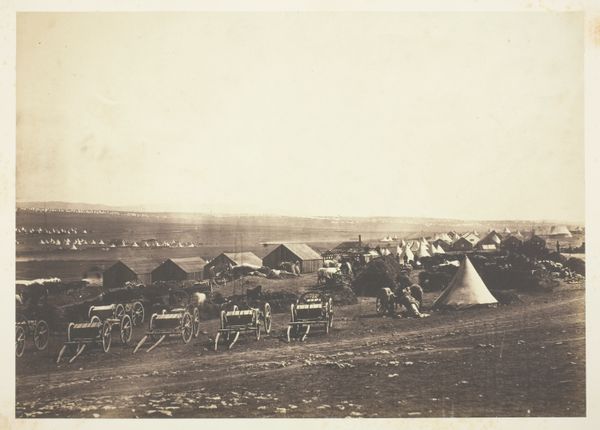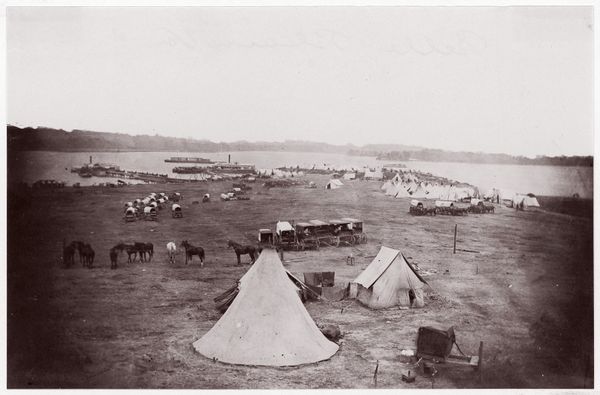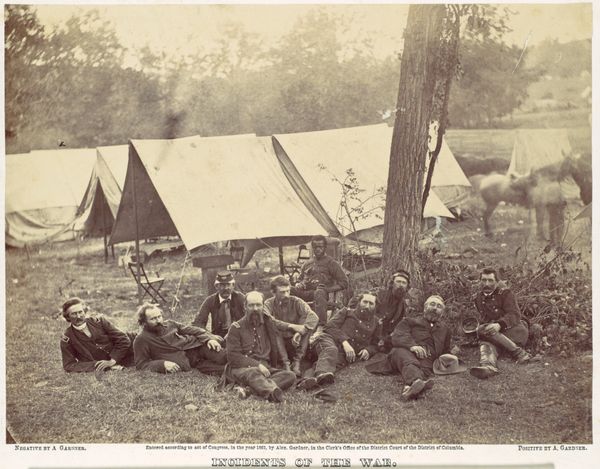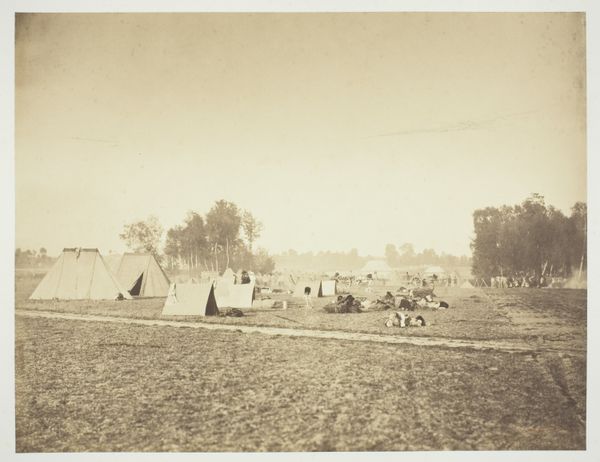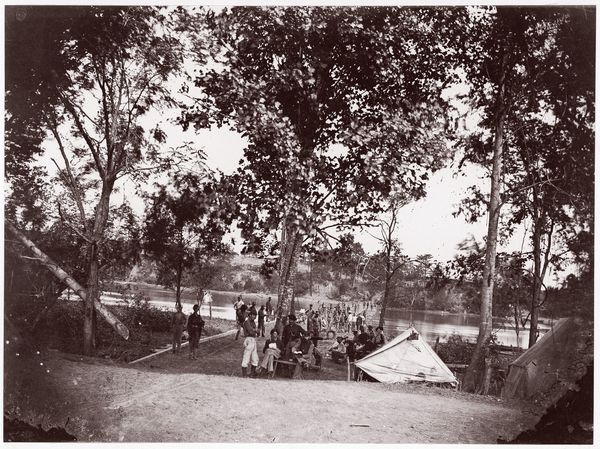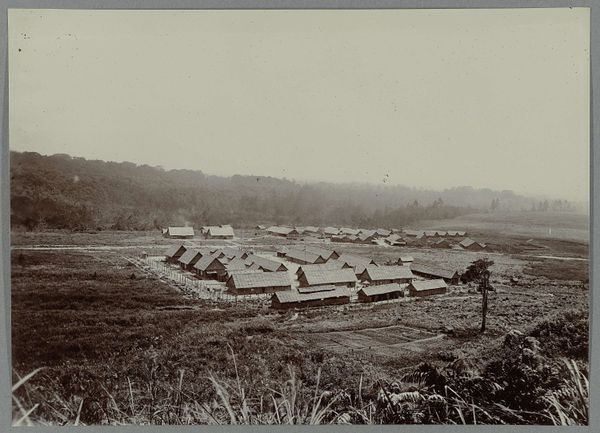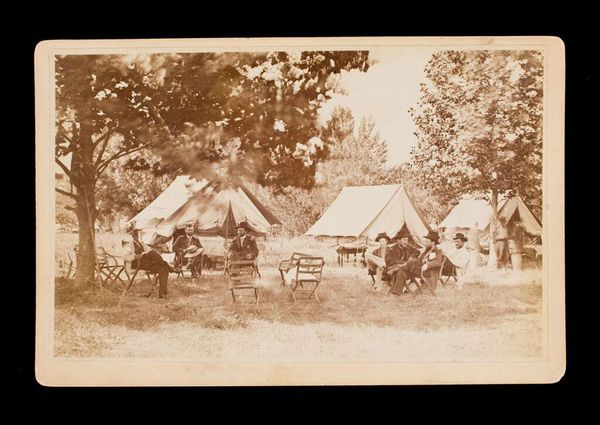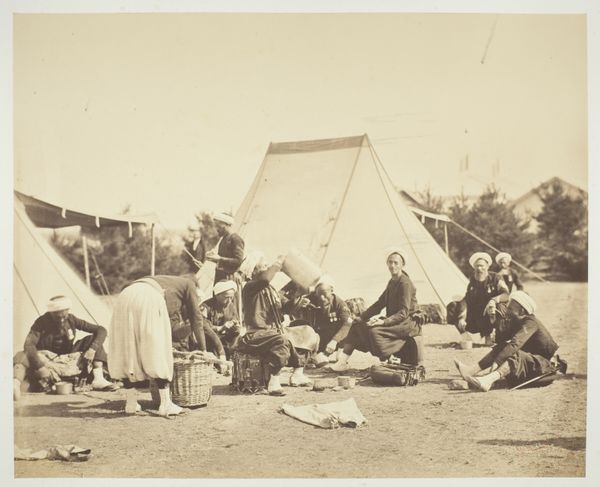
Camp of Construction Corps, U.S. Military Railroad, at City Point 1861 - 1865
0:00
0:00
photography, gelatin-silver-print
#
black and white photography
#
war
#
landscape
#
photography
#
black and white
#
gelatin-silver-print
#
monochrome photography
#
men
#
monochrome
#
monochrome
Copyright: Public Domain
Curator: This gelatin silver print is titled "Camp of Construction Corps, U.S. Military Railroad, at City Point." It’s attributed to Andrew Joseph Russell and dates to the American Civil War era, between 1861 and 1865. Editor: What immediately strikes me is the dense, almost claustrophobic feeling. Even though it’s an outdoor scene, the tents are so tightly packed together, and that foreground figure…he’s practically hidden amongst the undergrowth. Curator: Yes, and think about those tents. They're all but identical, forming rigid rows, creating a visual metaphor for the ordered life and constraints within military structure. Editor: Precisely! They are repetitive. Think about the making and moving of all that canvas. These tents represent the industrial output that supports a war effort. Where were they made? By whom? And under what conditions? It's a whole system of production and supply contained within this single frame. Curator: Good points. Symbolically, the image evokes a kind of temporary community, but also prefigures loss and separation given the circumstances, wouldn't you say? It presents a visual field punctuated by a sense of transient shelter. Each of those identical structures represents a single soldier or a small group…all working toward a singular military-industrial purpose. Editor: Definitely. I'm wondering about the labour involved to clear this land, transport all the materials for these constructions. The photographic process itself – preparing the chemicals, exposing and developing the print… This image represents a huge amount of labor both visible and invisible. Curator: Also consider the figure in the lower left. Notice how his placement and posture, obscured partially, suggest perhaps a longing for respite or a contemplation of his position within this landscape of war and industry? It offers us a break from all those rigidly placed tents. He is more closely embedded with natural foliage than structural canvas, implying perhaps some sort of refuge. Editor: Interesting contrast to note the relationship between figure and canvas. Well, seeing how materials are deployed in such a photograph truly underscores for me how essential material resources and modes of making were to conducting even a very human conflict. Curator: And for me, I’m reminded how such material details speak volumes about the psychological and social experiences of individuals caught within immense historical forces.
Comments
No comments
Be the first to comment and join the conversation on the ultimate creative platform.
